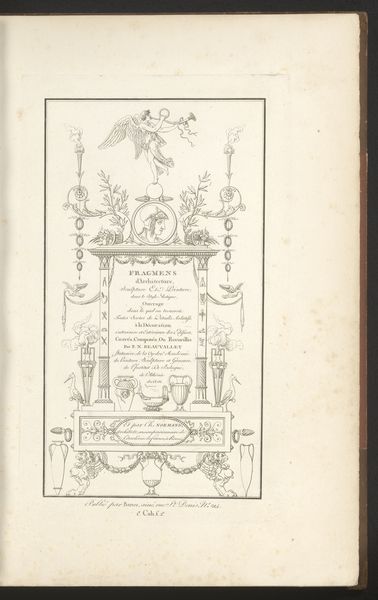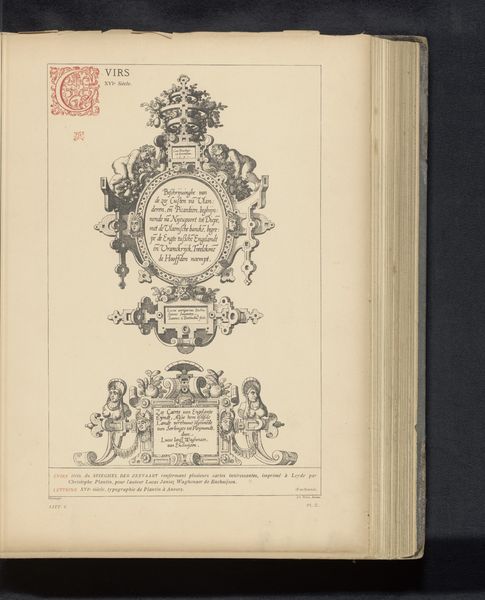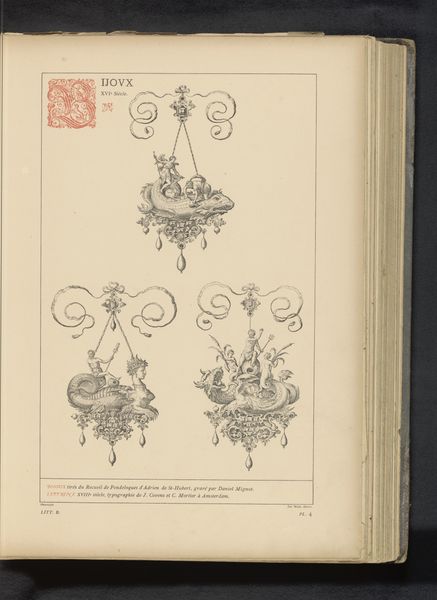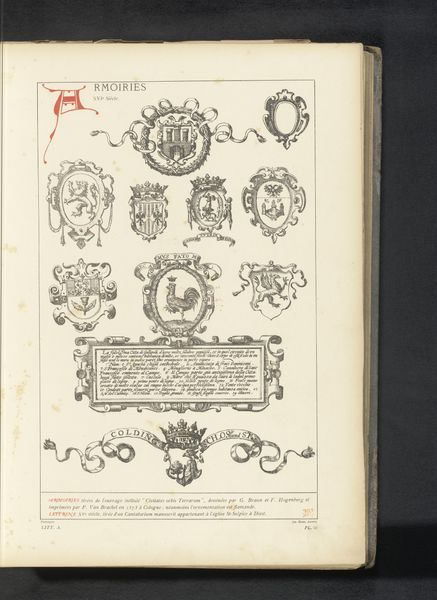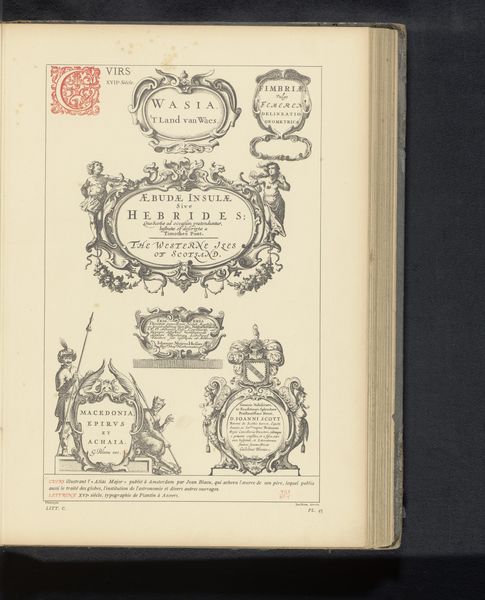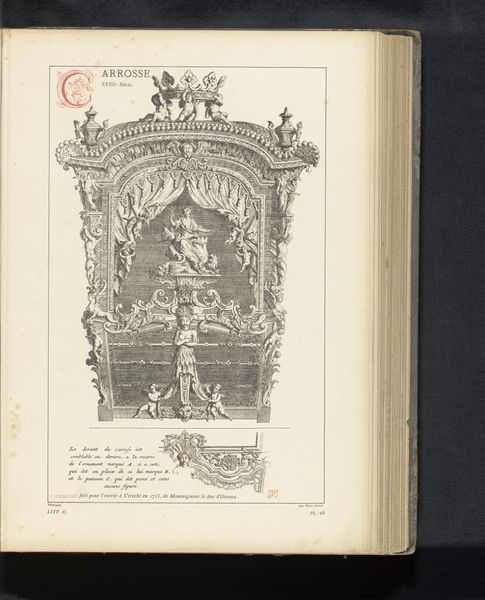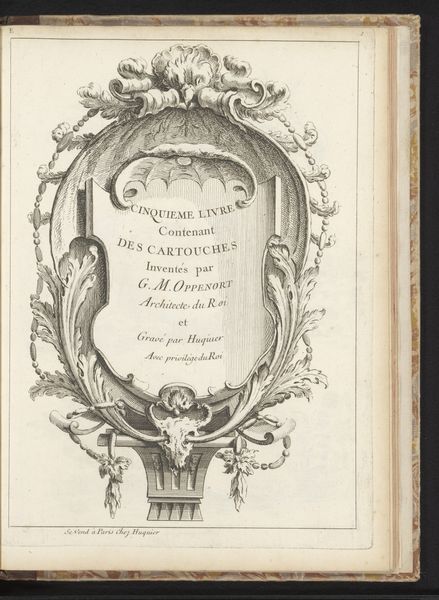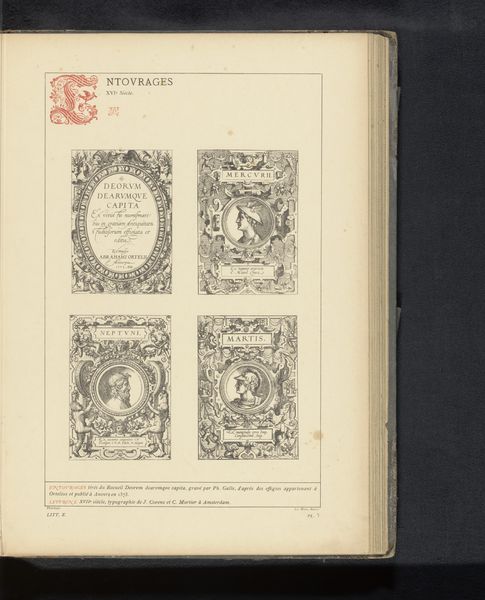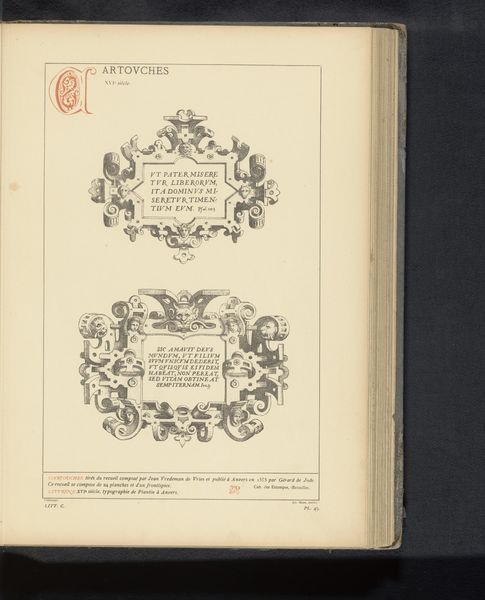
Reproductie van een titelpagina met grotesken, ontworpen door Pieter Coecke van Aelst I before 1880
0:00
0:00
graphic-art, print, engraving
#
graphic-art
# print
#
figuration
#
11_renaissance
#
line
#
northern-renaissance
#
engraving
Dimensions: height 343 mm, width 232 mm
Copyright: Rijks Museum: Open Domain
Curator: What strikes me immediately is how this work embodies the aspirations and aesthetics of the Renaissance—such a formal declaration! Editor: Agreed, though there's a coldness here for me; this Northern Renaissance engraving, "Reproductie van een titelpagina met grotesken, ontworpen door Pieter Coecke van Aelst I," made before 1880, presents an imagined structure... a frame without a picture, of sorts. It looks incomplete. Curator: Indeed. The materiality is stark. It's just the engraving and paper itself. However, it represents something grander: a portal. Consider the cultural context of grotesque design. Rooted in rediscovering classical antiquity, the imagery would carry messages about status and power. Who got to see it, who would interact with the image, what would that access signify for them socially? Editor: A print like this serves as a form of knowledge production. We have a technology and industry that facilitates circulation, one meant to inspire a material response from workshops or even larger architectural projects perhaps. Think of the engraver, their skills as a craftsperson; how their work translates the architect's vision. Curator: Exactly. Look closely. The central space invites a name, an assertion, even a branding of sorts. That reminds me of the period's surge in personal and familial identity quests, fuelled partly by Humanist philosophical views. So, one can think about whose image or words might appear inside to bolster their position in society. Editor: You're spot on. Plus, considering it’s printed rather than a unique design, that multiplies its impact. A single craftsman made something, but the work’s potential spreads quickly by reproduction. Think about how a title page makes you approach the book differently. It is there to frame meaning. Curator: This forces me to reconsider the modern use of such imagery as both aesthetic object, detached from specific original meanings and re-deployed through the lens of critical theory! That opens up the discussion around what remains socially significant in revisiting the historical material… Editor: For me, seeing the marks and the materials grounds it. It's important to connect such imagery to broader workshops and global movements where the exchange of labor creates something new.
Comments
No comments
Be the first to comment and join the conversation on the ultimate creative platform.
